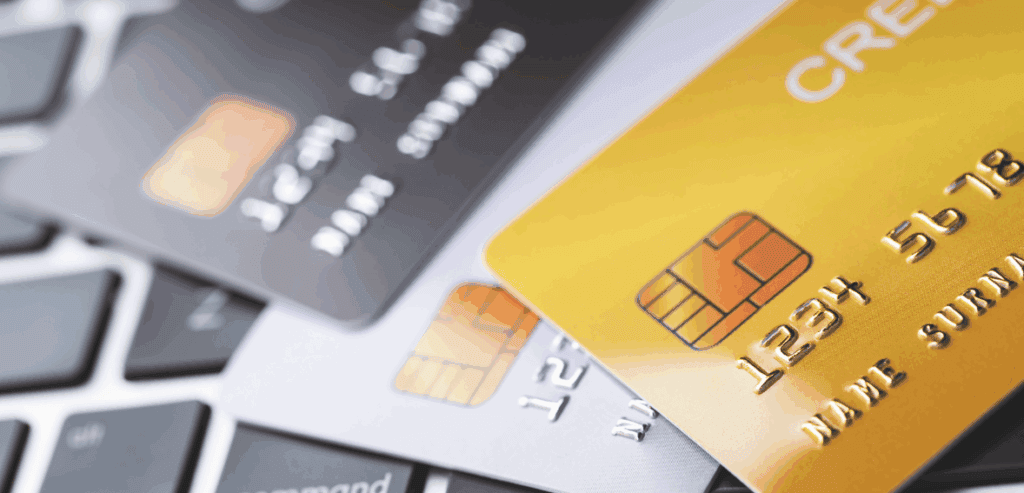
By Tracy Ornelas July 11, 2025
Running a small business involves more than just making sales and keeping customers happy. In the world of card payments, there’s a lesser-known issue that can catch many entrepreneurs off guard: chargebacks. If you’ve ever had a customer dispute a transaction, you know just how stressful and confusing the process can be. It’s not just about losing a sale—it’s also about lost inventory, penalties, and even potential damage to your reputation.
Chargebacks were created to protect consumers, but when misused or misunderstood, they can hurt merchants—especially small business owners without the time or resources to fight them. This guide breaks down everything you need to know about chargebacks in 2025, from what they are and how they work to practical steps you can take to reduce your risk and protect your revenue.
Whether you own a brick-and-mortar store, run an online boutique, or manage a local service business, understanding how chargebacks happen and how to respond is critical to keeping your operations healthy and secure.
What Is a Chargeback?

A chargeback is the reversal of a credit or debit card transaction. It happens when a customer contacts their bank or card issuer to dispute a charge. Instead of requesting a refund directly from the merchant, they ask the bank to return the funds.
How Chargebacks Work
When a chargeback is filed, the bank temporarily removes the disputed amount from your merchant account. You will receive a notification explaining the reason code, along with an opportunity to respond. If you can provide compelling evidence that the charge was valid, the funds may be returned to you. If not, the customer keeps the money and the chargeback becomes permanent.
This process involves several parties: the cardholder, the cardholder’s bank (issuer), the card network (like Visa or Mastercard), your payment processor, and you as the merchant. The complexity of these interactions is what makes chargebacks so difficult to manage.
Chargeback vs Refund
It’s important to distinguish chargebacks from refunds. A refund is initiated by the merchant, usually to resolve a customer complaint. A chargeback is initiated by the customer through their bank, often without notifying the merchant first. Refunds are voluntary and controlled by you, while chargebacks are enforced and involve penalties.
Common Reasons for Chargebacks
Understanding why chargebacks happen can help you prevent them. While each situation is different, certain causes appear again and again in small business environments.
Fraudulent Transactions
This occurs when someone uses a stolen card or card details to make a purchase. Once the real cardholder notices the unauthorized transaction, they report it, triggering a chargeback. These cases are also referred to as “true fraud.”
Friendly Fraud
This is when a legitimate customer disputes a valid charge. It might happen because they forgot about the transaction, didn’t recognize the charge on their statement, or wanted to avoid paying. Although unintentional in some cases, friendly fraud is a major problem for small businesses.
Product or Service Issues
Customers may file chargebacks if they feel a product was defective, not as described, or never arrived. Service providers may face disputes if the customer believes the service was incomplete, poor in quality, or misrepresented.
Technical Errors
Duplicate charges, incorrect amounts, or subscription billing mistakes can result in chargebacks. Even a simple glitch in your point-of-sale system can trigger a dispute if not handled quickly.
Miscommunication or Poor Customer Service
Sometimes chargebacks happen because the customer couldn’t get a clear answer from your team or didn’t know how to contact you. If your return policy is unclear or your team isn’t empowered to resolve issues quickly, the customer may go straight to the bank.

The True Cost of Chargebacks for Small Businesses
Many small business owners view chargebacks as a minor inconvenience. But the financial and operational impact can be far greater than the initial transaction amount.
Lost Revenue and Inventory
When a chargeback is filed, you lose both the sale and the product or service you provided. If you can’t recover the item or demonstrate that the service was fulfilled, you absorb the full cost of the transaction.
Chargeback Fees
Processors typically charge a fee for each chargeback, ranging from $15 to $50. If you receive too many chargebacks, your fees may increase, and your merchant account could be flagged as high risk.
Time and Resources
Disputing a chargeback requires gathering evidence, submitting documentation, and sometimes waiting weeks for a decision. For small teams, this process takes time away from more productive activities like customer service or marketing.
Reputation Risk
A high chargeback rate can hurt your standing with payment processors and card networks. In extreme cases, you may lose the ability to accept credit cards altogether. Customers may also view unresolved disputes as a sign of poor business practices.
How to Prevent Chargebacks
While it’s impossible to avoid chargebacks completely, there are many practical steps you can take to reduce their frequency and protect your business.
Be Clear and Honest with Product Descriptions
Whether you sell online or in person, be sure your product or service descriptions are accurate and detailed. Include sizing charts, photos, return policies, and timelines to avoid misunderstandings.
Offer Great Customer Service
Make it easy for customers to reach you with questions or complaints. Train your staff to handle issues quickly and offer solutions such as refunds or exchanges when necessary. In many cases, a well-handled refund can prevent a chargeback from ever happening.
Use Recognizable Billing Descriptors
Many chargebacks happen because customers don’t recognize the business name on their card statement. Work with your payment provider to ensure your billing descriptor is clear, such as “ABC Gifts Newark” instead of “POS 84529.”
Require Signature or Delivery Confirmation
For in-person sales, ask customers to sign receipts or invoices. For online orders, require delivery confirmation with tracking numbers. For higher-value orders, consider requiring a signature upon delivery.
Implement Strong Fraud Protection Tools
Use address verification (AVS), CVV checks, and geolocation tools to prevent fraud at checkout. Your payment processor may also offer fraud scoring or machine learning tools that detect risky transactions before they’re approved.
How to Respond to Chargebacks
Despite your best efforts, some chargebacks will still happen. Knowing how to respond effectively can improve your chances of winning disputes and recovering lost funds.
Read the Reason Code Carefully
Each chargeback comes with a reason code that explains why the customer filed the dispute. This code determines the kind of documentation you need to provide. Common reason codes include “product not received,” “unauthorized transaction,” or “duplicate charge.”
Gather Compelling Evidence
To fight a chargeback, you’ll need to provide proof that the transaction was legitimate. This might include:
- Receipts or invoices
- Shipping records or delivery confirmation
- Customer communication
- Photos of the product
- Terms and conditions or refund policy
For service providers, include signed contracts, appointment logs, or messages that confirm service completion.
Submit Your Response Promptly
Most processors give you 7 to 14 days to respond to a chargeback. Waiting too long can result in an automatic loss. Submit your documentation through the appropriate portal and follow all formatting guidelines.
Follow Up if Needed
After you submit a rebuttal, the processor or card network reviews your case. The process may take a few weeks. Stay in touch with your payment provider and be prepared to escalate the issue if needed.
Chargeback Representment and Arbitration
The chargeback process has multiple phases. Understanding these phases helps you manage expectations and prepare if a dispute escalates.
Representment
When you respond to a chargeback with evidence, you are engaging in “representment.” This is your opportunity to prove that the charge was valid. If the evidence is strong, the bank may reverse the chargeback and return the funds.
Second Chargebacks and Pre-Arbitration
Sometimes the customer may continue to dispute the transaction, even after you’ve won the representment phase. This leads to a second chargeback or pre-arbitration. At this point, you can decide to fight again or accept the loss.
Arbitration
If the issue still isn’t resolved, it may move to arbitration. This is a formal review by the card network. Arbitration is rare for small businesses because it involves high fees and complex legal procedures. Most merchants choose to stop the fight before this stage.

Monitoring and Managing Your Chargeback Ratio
Your chargeback ratio is the percentage of transactions that result in chargebacks. This number is closely monitored by payment processors and card networks.
What Is a Safe Chargeback Ratio?
A chargeback ratio under 1 percent is generally considered acceptable. Ratios above 1 percent may trigger warnings, higher fees, or account termination. If you reach 2 percent or more, you may be placed in a high-risk monitoring program by Visa or Mastercard.
How to Track Your Ratio
Most merchant accounts include a reporting dashboard. Use it to track:
- Number of transactions
- Number of chargebacks
- Chargeback reasons and dates
Monthly monitoring helps you spot trends and take corrective action before things get out of hand.
Tips for High-Risk Industries
Certain industries are more prone to chargebacks than others. If your business falls into one of these categories, extra precautions are essential.
Subscription Services
Recurring billing often leads to disputes if customers forget about the charge or find it difficult to cancel. Use clear consent forms, send billing reminders, and offer easy cancellation options.
Online Retail and Drop Shipping
Product delivery issues and long shipping times can increase chargebacks. Provide tracking numbers, realistic delivery windows, and fast customer service.
Travel and Events
Cancellations or delays may lead to refund disputes. Use detailed contracts and outline refund policies in writing. Be proactive with communication during emergencies or delays.
Working with Your Payment Processor
Your payment processor can be a valuable partner in managing chargebacks. Choose a provider that offers transparency, support, and access to tools that help reduce fraud and manage disputes.
What to Look For
- A chargeback management portal
- Automatic fraud filters
- Dispute alerts and email notifications
- Clear reporting on chargeback activity
Processors that offer real-time alerts (like Visa’s Rapid Dispute Resolution or Ethoca Alerts) can give you a head start in resolving disputes before they become chargebacks.
Consider Using a Chargeback Management Service
If chargebacks are becoming a recurring issue, consider outsourcing to a company that specializes in chargeback management. These services analyze your cases, handle documentation, and help improve win rates. For busy business owners, this can save time and protect revenue.
Conclusion: Be Proactive, Not Reactive
Chargebacks are a reality of doing business in a card-driven economy. But they don’t have to drain your profits or derail your operations. By understanding how chargebacks work, why they happen, and how to respond effectively, small business owners can protect themselves from unnecessary losses. Start by strengthening customer service, being transparent with your policies, and investing in fraud prevention. Monitor your transactions regularly and partner with a payment processor that helps you stay compliant and supported.
Most importantly, take chargebacks seriously. Whether it’s a $10 item or a $500 service, each dispute is an opportunity to improve your systems, protect your business, and build long-term trust with your customers.